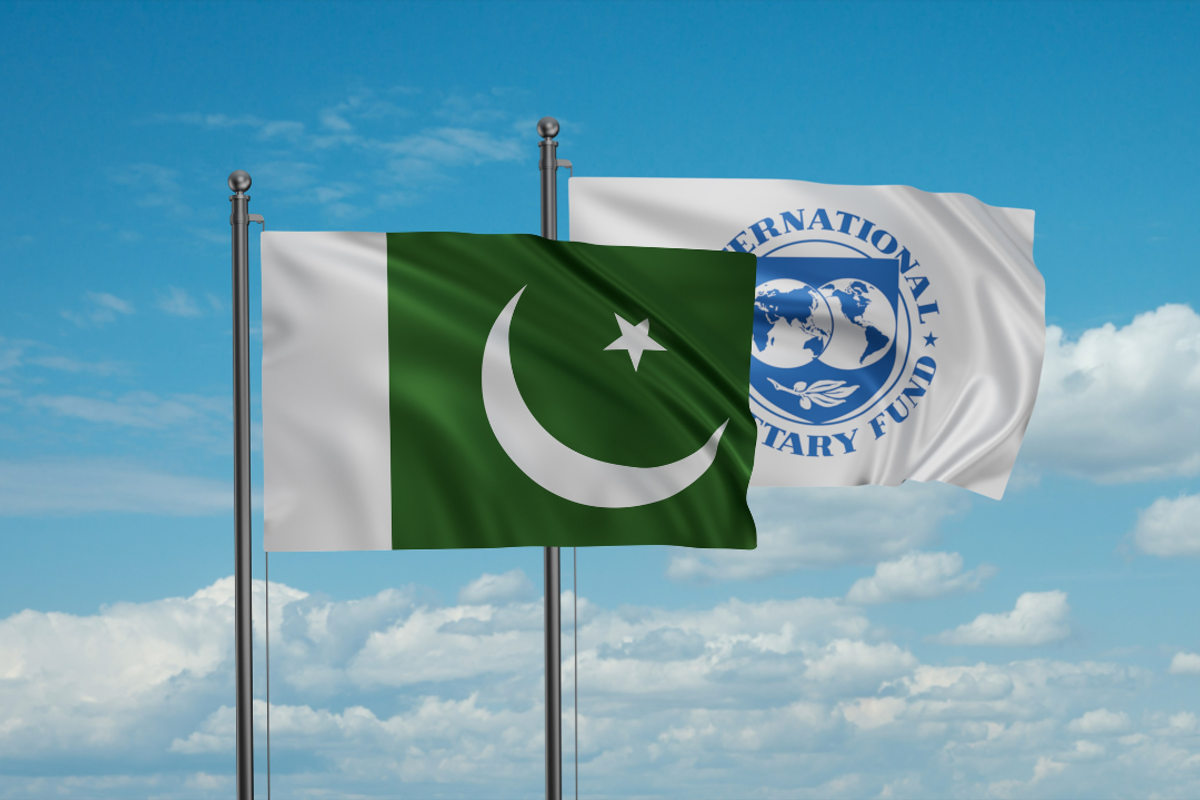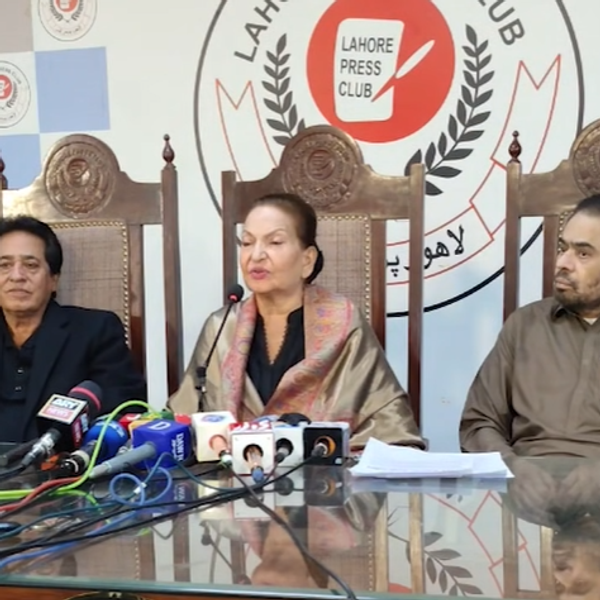Pakistan’s path to IMF loan: Fiscal discipline, reform pressures, and climate goals
Why the October agreement matters and how three years of hard choices are shaping the next phase of policy strategy
Nida Gulzar
Research Analyst
A distinguished economist with an M. Phil. in Applied Economics, Nida Gulzar has a strong research record. Nida has worked with the Pakistan Business Council (PBC), Pakistan Banks' Association (PBA), and KTrade, providing useful insights across economic sectors. Nida continues to impact economic debate and policy at the Economist Intelligence Unit (EIU) and Nukta. As a Women in Economics (WiE) Initiative mentor, she promotes inclusivity. Nida's eight 'Market Access Series papers help discover favourable market scenarios and export destinations.

Pakistan’s engagement with the IMF since 2022 reflects a series of shifting priorities and hard choices amid fiscal slippages, structural bottlenecks, climate shocks, and political instability
Nukta
Pakistan’s agreement with the International Monetary Fund (IMF) on a second review of its Extended Fund Facility (EFF) and the first review of the Resilience and Sustainability Facility (RSF) marks another critical juncture in a reform journey that has stretched across three turbulent years.
The new staff-level agreement, which unlocks about $1.2 billion in fresh disbursements, comes amid progress on disinflation, revenue mobilization, and fiscal consolidation but also persistent structural bottlenecks, climate shocks, and political constraints that could still test policy credibility.
A turbulent three-year history: From near-default to structural reset
Pakistan’s engagement with the IMF since 2022 reflects a series of shifting priorities and hard choices. The 2019 EFF — initially a $6 billion, 39-month program signed during the PTI government — was derailed by fiscal slippages, pandemic shocks, and political instability.
By mid-2022, foreign reserves had fallen below two months of import cover, the rupee faced steep depreciation, and default risks loomed.
In mid-2023, Islamabad negotiated a $3 billion Stand-By Arrangement (SBA) — a short-term stabilization bridge that prevented a balance-of-payments crisis, shored up reserves, and paved the way for deeper structural reforms.
The SBA’s conditions included exchange-rate liberalization, fuel and power price adjustments, and aggressive monetary tightening — painful but necessary steps that helped narrow external imbalances and rebuild policy credibility.
Building on that stabilization, Pakistan entered a new 37-month EFF with the IMF in September 2024. The program, which would run from 2024 to 2027, is worth around $7 billion, complemented by a $1.2 billion RSF focused on climate resilience.
The first review of the facility in March released $1 billion, recognizing early progress on fiscal discipline and reserve accumulation. The October agreement is the next milestone, reaffirming the program’s trajectory and introducing new climate-linked commitments.
Fiscal and revenue consolidation: Progress and persistent fragility
Fiscal reform continues to anchor the IMF program, as authorities pledged to deliver a 1.6% primary GDP surplus in FY26, underpinned by improved tax policy and more robust revenue mobilization.
Other commitments include containment of expenditures — which currently stand around 13.7% of GDP — within approved budgetary limits, supported by built-in mechanisms such as automatic Public Sector Development Program (PSDP) adjustments if revenue targets slip and targeted reallocations to support flood-affected provinces.
First signs of sluggish progress on the commitments came in September when the IMF raised concerns over Pakistan’s missed tax collection targets and unresolved court cases amounting to PKR 170 billion, which have stalled revenue recovery. The resolution of these cases alone could unlock around PKR 120 billion in additional revenue.
The IMF has also pushed for provincial alignment of agriculture income taxes with federal rates, broadening the tax base and reducing distortions. These reforms are designed to lift the tax-to-GDP ratio from just over 11% to beyond 13% by FY27 — still modest, but a significant structural shift.
Yet, fiscal vulnerabilities persist.
With external financing needs above $19 billion annually, revenue slippages could quickly erode credibility. The authorities’ success in integrating provincial tax systems, digitizing FBR processes, and curbing exemptions will determine whether the fiscal anchor holds.
Monetary policy and banking stability: Anchoring credibility
On the monetary side, Pakistan’s central bank has navigated a delicate balancing act. Policy rates — raised sharply during 2022-23 amid record inflation — resulted in a multi-decade-low monthly inflation print (0.28% in April). It also narrowed the interbank-open-market premium to within the IMF’s 1.25% target.
The Fund now forecasts inflation moderating to around 7.7% in FY26, within the State Bank of Pakistan’s (SBP) 5-7% target range.
The SBP’s credibility will hinge on sustaining a data-driven, real-positive interest rate stance, resisting fiscal dominance, and building reserves beyond the current $14 billion level.
Structural reforms: From SOEs to tariff rationalization
The Fund remains focused on tackling the state’s structural inefficiencies. Yet, the progress on state-owned enterprises (SOEs) — including business plans, audits, and corporate intent statements — has been uneven.
A new legislation to bring all SOEs under a unified governance framework is still pending, while the privatization of key power distribution companies faces delays.
However, trade policy reforms have advanced more prominently.
The National Tariff Policy (2025-30) and the forthcoming Auto Policy (2026) will phase out additional duties, reduce regulatory distortions, and cut average tariffs to below 6% by 2030. These changes aim to boost competitiveness, attract investment, and gradually unwind Pakistan’s longstanding anti-export bias.
Social protection and climate finance: A new policy frontier
The RSF component introduces a structural climate dimension.
Pakistan will integrate climate considerations into fiscal planning, adopt green-finance regulations, and launch a carbon levy on fossil fuels to fund the transition. Social spending is also rising: the BISP Kafaalat payment increased to PKR 13,500 in January and will reach PKR 14,500 by January 2026, with 700,000 new families added to the safety net.
Health and education spending — still below 2.4% of GDP — must rise further if social outcomes are to improve. Meanwhile, expanding conditional cash transfers and scaling climate-resilient infrastructure are critical for sustaining inclusive growth.
The road ahead: Execution is everything
The October SLA confirms that Pakistan’s macroeconomic trajectory is moving in the right direction — inflation is moderating, reserves are rebuilding, and fiscal balances are improving. But the next phase will be harder. Structural reforms, especially in taxation, energy, and SOE governance, will require deep political commitment, while climate shocks will continue to test resilience, as evidenced by the recent floods’ impact on growth.
Once approved by the IMF Executive Board, the agreement will unlock around $1 billion under the EFF and an additional $200 million under the RSF, bringing total disbursements under both facilities to approximately $3.3 billion. This fresh inflow of financing will provide crucial support to foreign reserves, fiscal buffers, and reform execution at a time when external conditions remain volatile.
If Pakistan sustains momentum, the EFF-RSF combination could lay the foundations for durable macro-stability and higher-quality growth. If not, the gains of the past three years risk being undone and followed by another cycle of crisis and bailout.










Comments
See what people are discussing